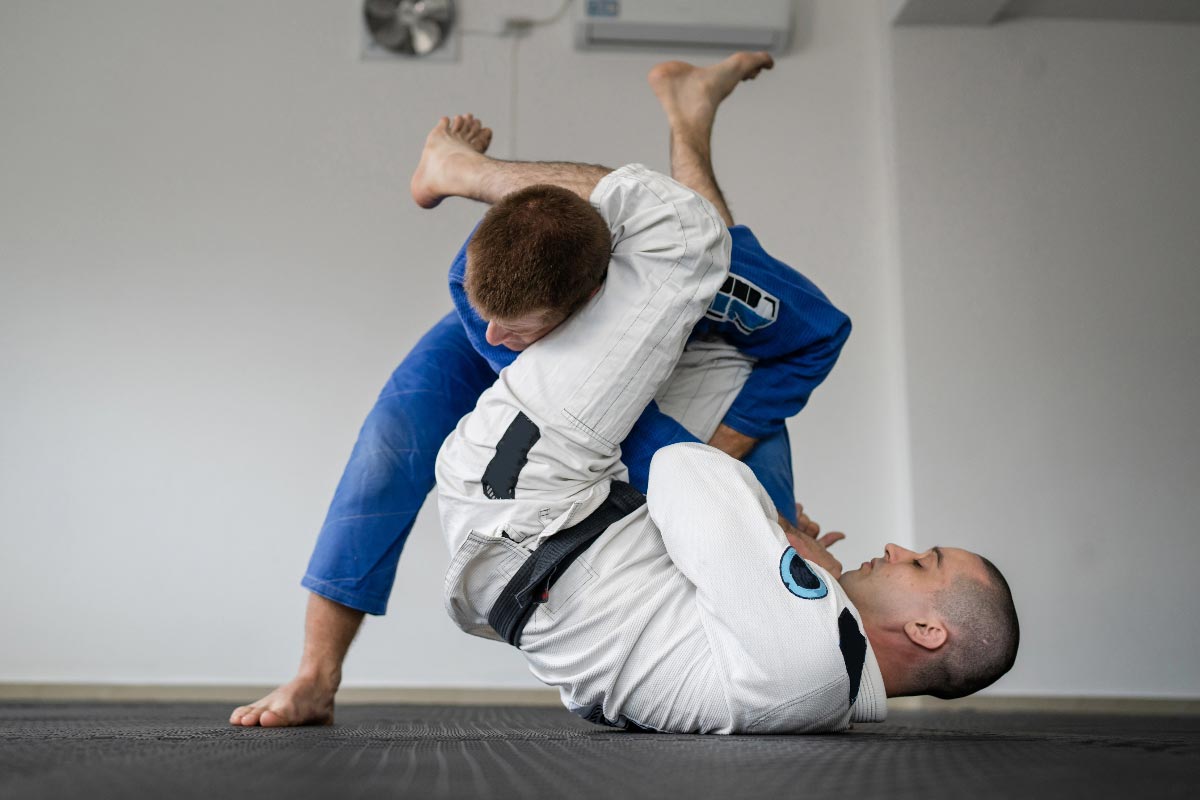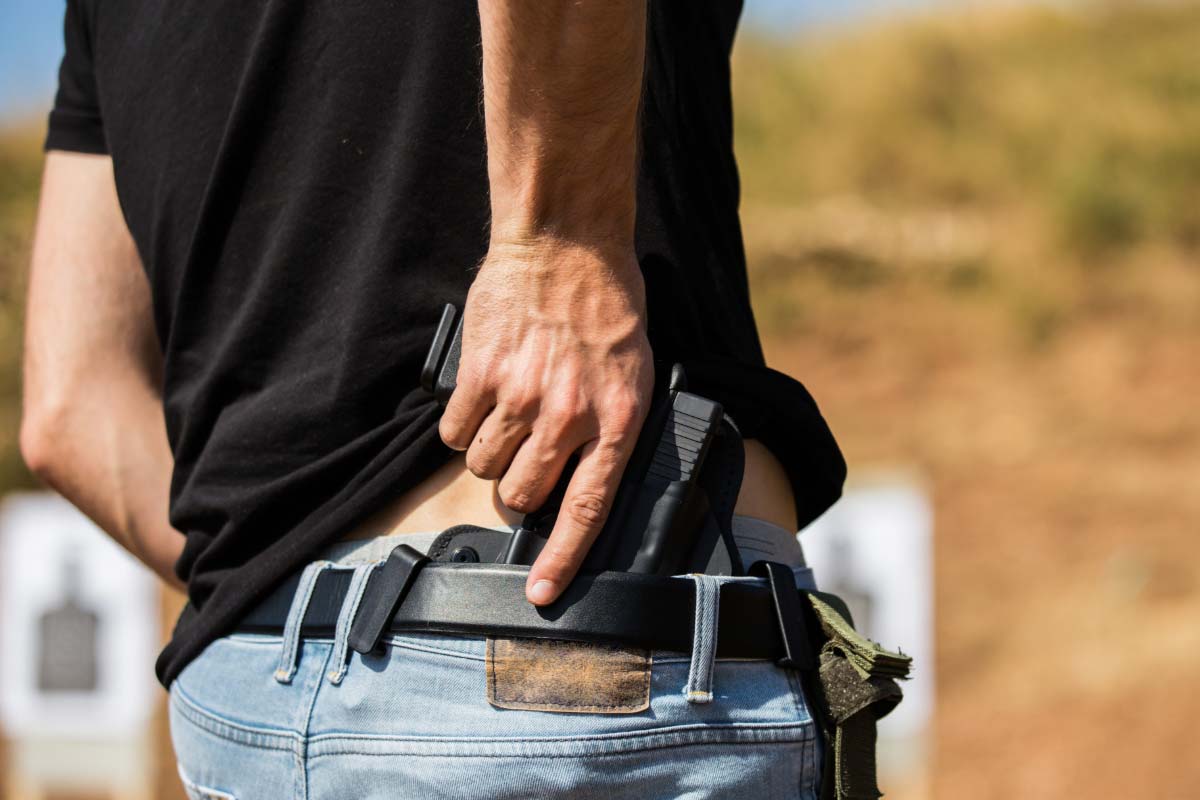In the realm of martial arts, Brazilian Jiu-Jitsu (BJJ) stands out as a titan of self-defense, offering a unique blend of technique, strategy, and adaptability. This grappling-based martial art has gained international acclaim not just for its presence in the competitive sports arena, but for its unparalleled effectiveness in real-world defense scenarios.
Whether you’re facing an opponent in a controlled environment or protecting yourself in an unforeseen confrontation, BJJ equips you with a set of skills designed to leverage your body’s potential regardless of your size or strength.
In this article, we’ll cover the core principles that make BJJ an essential discipline for anyone serious about mastering the art of self-defense. From its emphasis on leverage to its dynamic ground-fighting techniques, we’ll explore how BJJ empowers individuals to defend themselves with confidence and control. We will dive into the world of Brazilian Jiu-Jitsu and discover why it’s revered as one of the most effective martial arts for self-defense.
This article covers:
History and Philosophy of BJJ
Brazilian Jiu-Jitsu, or BJJ, originated from the traditional Japanese martial art of Jiu-Jitsu. It was adapted and modified by the Gracie family in Brazil in the early 20th century. The Gracie family, especially Helio and Carlos, believed that a smaller, weaker person could defend against a bigger and stronger assailant by using leverage and proper technique.
One of the core philosophies of Brazilian Jiu-Jitsu is the idea of technique over brute strength. Practitioners focus on gaining a superior position and using submissions like chokes and locks to overcome an opponent. This approach highlights how critical strategic maneuvers and leverage are in combat scenarios.
Royce Gracie, a member of the Gracie family, gained international fame by winning the first Ultimate Fighting Championship (UFC) tournaments. By defeating larger opponents, Royce demonstrated the effectiveness of BJJ’s philosophy on a global stage. These victories fueled the martial art’s popularity as an essential component of mixed martial arts (MMA) training.
Aside from its practicality in combat sport, BJJ embraces values such as self-discipline and confidence. Training in BJJ also offers considerable mental benefits, as the art encourages a problem-solving mindset and resilience. The consistent practice of BJJ fosters a sense of discipline and respect, both for oneself and for others, which can translate to various aspects of life.
Core Principles of BJJ
Brazilian Jiu-Jitsu (BJJ) is a martial art focused on grappling and ground fighting, where the core principles revolve around the use of technique, leverage, and control. It emphasizes that a smaller, weaker person can defend against a larger adversary, mainly by applying these principles effectively. Here are some of the key concepts that make BJJ highly effective:
- Leverage: BJJ teaches practitioners to use the mechanical advantage of leverage to overcome strength. By applying leverage, one can control an opponent’s much larger body.
- Technique and Strategy: Techniques are the specific moves and positions that one uses in BJJ. A well-thought-out strategy complements techniques, guiding a practitioner on when to apply what move for maximum effect.
- Safety and Defense: Practitioners prioritize safety by staying calm and using defensive positions to protect themselves. Effective defense is as critical as offense in BJJ.
- Control: Achieving a dominant position over an opponent and maintaining control is essential. It’s about immobilizing an opponent to dictate the pace and direction of the match.
By adhering to these principles, BJJ practitioners excel by using brain over brawn, ensuring they are able to handle various combat scenarios with intelligence and precision. The philosophy of Brazilian Jiu-Jitsu instills in its students not just a set of physical skills but also a mental approach to confront challenges both on and off the mats.
Techniques and Training
In Brazilian Jiu-Jitsu, mastery of various techniques and consistent training are the bedrock for an effective practitioner. This section delves into the specific ground fighting moves, training methods, and submission tactics that distinguish this martial art.
Ground Fighting Techniques
Brazilian Jiu-Jitsu predominantly focuses on ground fighting with an array of techniques that enable a competitor to control an opponent leading to a submission. Holds and locks are vital, as they can neutralize the advantage of a stronger adversary through leverage and proper positioning. Training includes learning guard positions, escapes, and the ability to switch from defensive to offensive stances fluidly.
Training Methods
The training regimen in Brazilian Jiu-Jitsu is comprehensive, enhancing not only technique but also physical fitness. A typical session may include a warm-up, stretching, drilling techniques, rolling (live sparring), and reflecting on strategies. This approach develops strength, endurance, stamina, and flexibility, all while instilling patience and discipline.
Submission Techniques
Submission techniques are a trademark of Brazilian Jiu-Jitsu, showcasing its efficiency in MMA and sport grappling contests. These techniques focus on joint locks and chokes that compel an opponent to submit. A practitioner’s ability to execute a submission hold is a clear indicator of their skill level, often symbolized by their belt rank, with black belt being the highest standard of proficiency.
BJJ for Combat and Self-Defense
Brazilian Jiu-Jitsu (BJJ) offers practical techniques that are highly effective in various combat scenarios, including street fights. It emphasizes control, leverage, and technique over brute strength, making it an invaluable martial art for self-defense.
Control and Restraint
In a real fight, the ability to restrain an aggressive opponent becomes paramount to ensure safety. BJJ practitioners specialize in achieving dominant positions, enabling them to control the pace and outcome of an encounter. Key to this control is the use of leverage, allowing smaller defenders to manage larger adversaries effectively.
One fundamental tactic is to take the confrontation to the ground, limiting the opponent’s mobility. Here, through various holds, locks, and chokes, the BJJ fighter can neutralize threats without resorting to excessive force. This aspect of BJJ is not just theory; it is a strategy applied regularly in self-defense situations, proving its efficiency repeatedly.
BJJ for Self-Defense Against Larger Opponents
BJJ excels in providing self-defense strategies against larger and stronger opponents. It leverages technique and positional advantage, thereby compensating for the size disparity. For instance, using a series of calculated movements, a BJJ practitioner can secure a submission hold, rendering an attacker’s physical advantages irrelevant.
This martial art instills confidence in dealing with street fights, where one’s safety may depend on subduing a larger aggressor swiftly. As most conflicts tend to end on the ground, BJJ’s focus on ground fighting equips individuals with the necessary skills to defend themselves effectively in such common self-defense scenarios.
Adaptation and Evolution of BJJ
Brazilian Jiu-Jitsu (BJJ) is a martial art renowned for its continuous evolution and exceptional adaptability. It has transitioned effectively through different combat forms, and its efficiency is well-proven in various fighting arenas.
Evolution and Adaptability
BJJ has its roots in Judo and has incorporated elements from various martial arts like Karate and Muay Thai. Over time, BJJ practitioners adapted techniques to suit no-gi grappling and mixed martial arts (MMA), showcasing flexibility within different rule sets. This adaptability has been significant in the sport’s progression, enabling fighters to apply BJJ techniques effectively inside the UFC’s Octagon. The evolution of Brazilian Jiu-Jitsu is evident in its prevalence across multiple combat platforms, with successful translations into tournament scenarios and practical self-defense.
Mental and Physical Benefits
Training in BJJ provides extensive mental benefits, such as improved discipline, patience, and cognitive skills. The strategic nature of BJJ encourages a problem-solving mindset and can be a source of fun for those involved. As for physical fitness, consistent training builds physical strength and endurance, integral for prolonged matches or intense training sessions. The art form prepares individuals for the rigorous demands of high-stakes matches in prestigious MMA settings like the Ultimate Fighting Championship.







